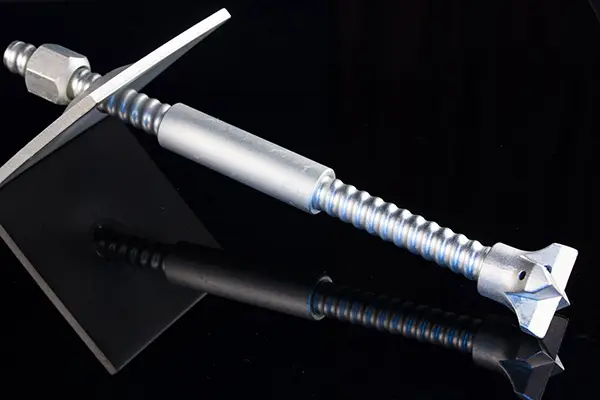Self-drilling anchors are a popular choice for fastening into concrete, masonry, and other solid substrates. They are designed to drill their hole as they are driven into the material, eliminating the need for a separate pilot hole. However, the question of whether or not to use a pilot hole with self-drilling anchors often arises.
The Role of Pilot Holes
A pilot hole is a small hole drilled into the substrate before inserting the anchor. While not strictly necessary for self-drilling anchors, there are certain circumstances where using a pilot hole can be beneficial:
- Precise Placement: A pilot hole can help ensure accurate placement of the anchor, especially in delicate or critical applications.
- Reduced Stress on the Anchor: Drilling a pilot hole can reduce the stress on the anchor during installation, especially in hard or brittle materials.
- Preventing Material Damage: A pilot hole can help prevent the anchor from cracking or chipping the substrate in softer materials.
When to Use a Pilot Hole with Self-Drilling Anchors:
While self-drilling anchors are designed to work without pilot holes, there are specific situations where a pilot hole can be advantageous:
- Very Hard or Brittle Materials: In extremely hard or brittle materials, such as dense concrete or certain types of stone, using a pilot hole can help prevent the anchor from breaking or the material from cracking.
- Thin Material: A pilot hole can help prevent the anchor from pushing through the other side if you’re working with thin material.
- Critical Applications: Using a pilot hole can provide additional assurance for applications where precise placement and maximum holding power are essential.
When to Avoid Using a Pilot Hole:
In most cases, self-drilling anchors can be installed without a pilot hole. Here are some situations where a pilot hole is generally not necessary:
- Standard Concrete and Masonry: For most standard concrete and masonry applications, self-drilling anchors can be installed directly without a pilot hole.
- Faster Installation: Skipping the pilot hole step can save time and effort, especially for large-scale projects.
Choosing the Right Self-Drilling Anchor
To ensure optimal performance, it’s crucial to select the appropriate self-drilling anchor for your specific application. Consider the following factors:
- Material Thickness: The thickness of the material will determine the required anchor length.
- Material Type: The type of material (concrete, masonry, etc.) will influence the anchor’s design and size.
- Load Capacity: The anticipated load on the anchor will dictate the necessary anchor size and type.
- Installation Tool: The type of tool you’ll use (impact driver, drill, etc.) will affect the anchor’s compatibility.
Conclusion
While self-drilling anchors are designed for convenience and efficiency, using a pilot hole can be beneficial in certain situations. By understanding the factors that influence the need for a pilot hole, you can make informed decisions to ensure the best possible results for your project. Ultimately, the decision to use a pilot hole depends on the specific requirements of your application and the materials involved.
Post time: Nov-18-2024
















